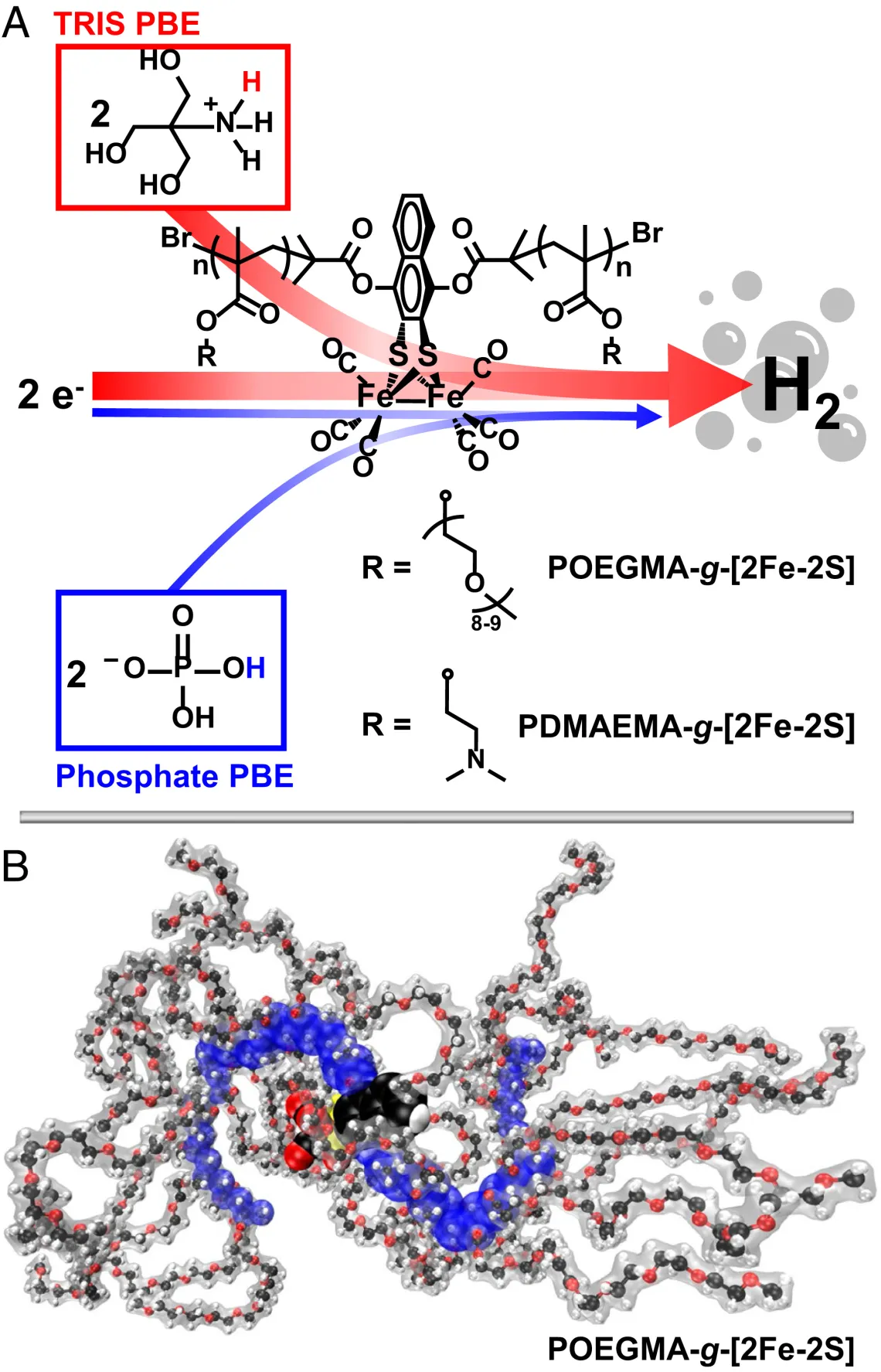Increasing the rate of the hydrogen evolution reaction in neutral water with protic buffer electrolytes

Abstract: Electrocatalytic generation of H2 is challenging in neutral pH water, where high catalytic currents for the hydrogen evolution reaction (HER) are particularly sensitive to the proton source and solution characteristics. A tris(hydroxymethyl)aminomethane (TRIS) solution at pH 7 with a [2Fe-2S]-metallopolymer electrocatalyst gave catalytic current densities around two orders of magnitude greater than either a more conventional sodium phosphate solution or a potassium chloride (KCl) electrolyte solution. For a planar polycrystalline Pt disk electrode, a TRIS solution at pH 7 increased the catalytic current densities for H2 generation by 50 mA/cm2 at current densities over 100 mA/cm2 compared to a sodium phosphate solution. As a special feature of this study, TRIS is acting not only as the primary source of protons and the buffer of the pH, but the protonated TRIS ([TRIS-H]+) is also the sole cation of the electrolyte. A species that is simultaneously the proton source, buffer, and sole electrolyte is termed a protic buffer electrolyte (PBE). The structure–activity relationships of the TRIS PBE that increase the HER rate of the metallopolymer and platinum catalysts are discussed. These results suggest that appropriately designed PBEs can improve HER rates of any homogeneous or heterogeneous electrocatalyst system. General guidelines for selecting a PBE to improve the catalytic current density of HER systems are offered.
